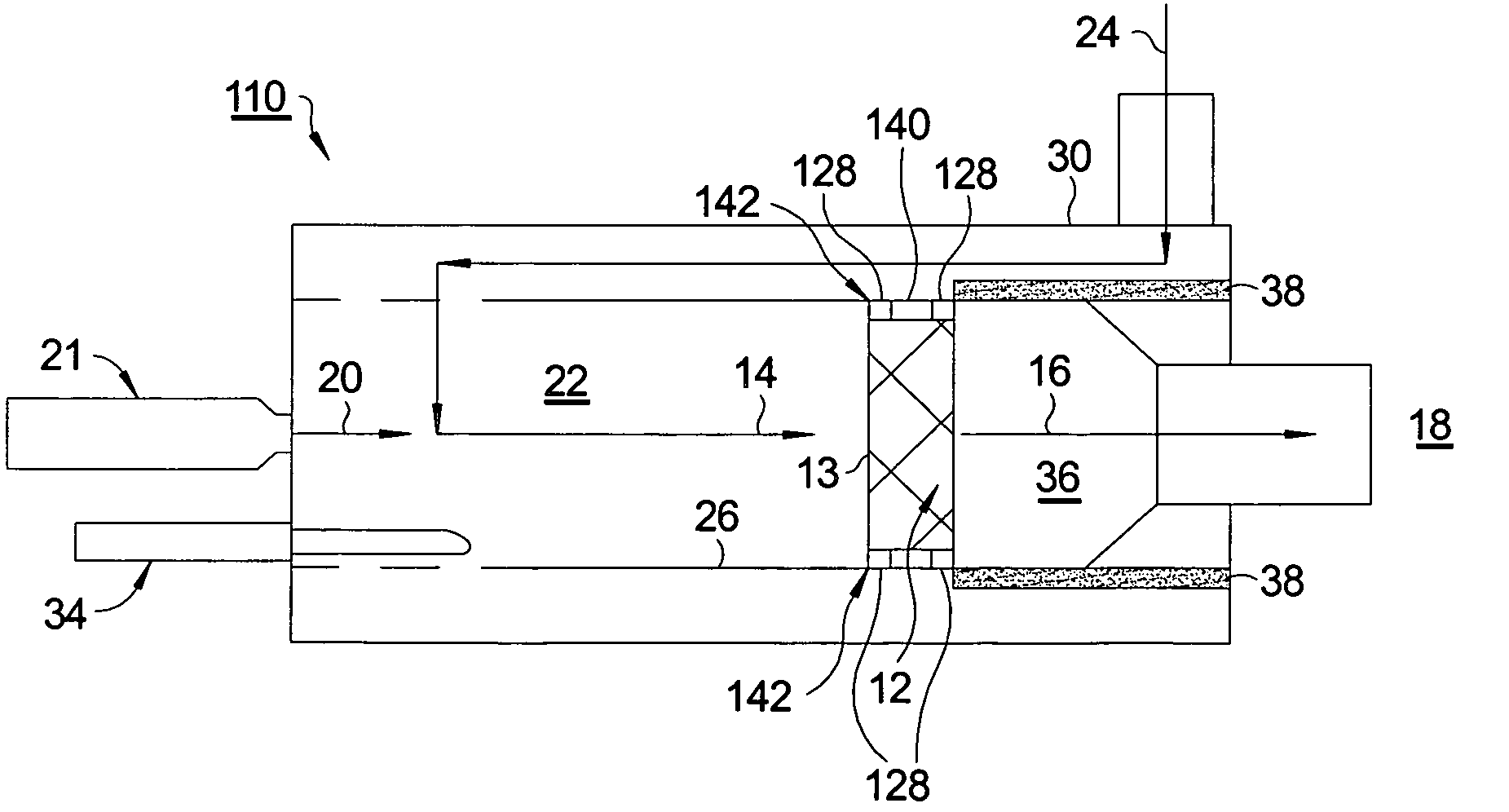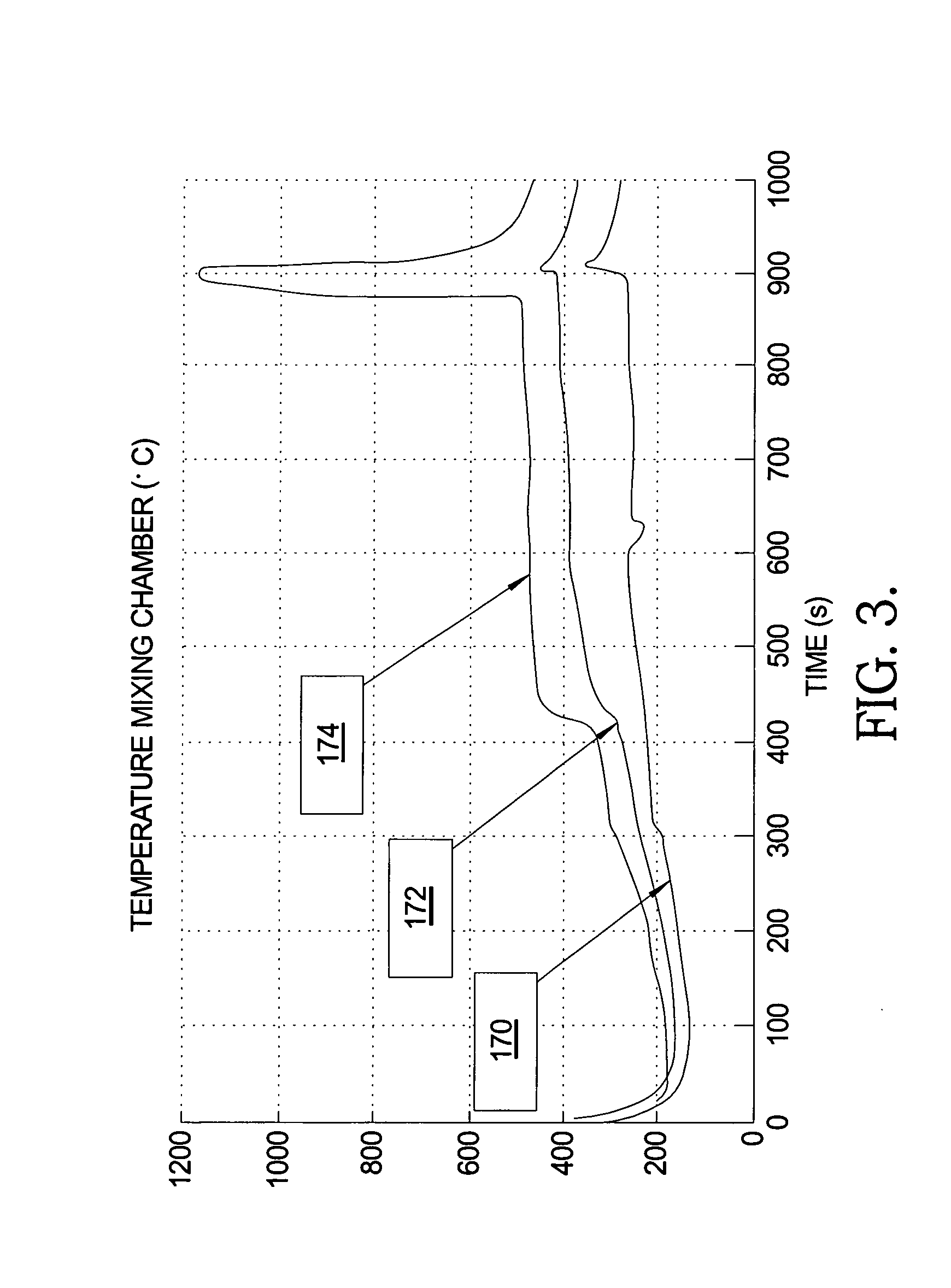Fuel cell hydrocarbon reformer having rapid transient response and convective cooling
- Summary
- Abstract
- Description
- Claims
- Application Information
AI Technical Summary
Benefits of technology
Problems solved by technology
Method used
Image
Examples
Embodiment Construction
[0013]Referring to FIG. 1, a typical prior art catalytic hydrocarbon reformer 10, such as used for supplying reformate to a SOFC system, is shown. Reformer 10 comprises a catalytic element 12, typically a porous or channeled monolithic element known in the art as a “brick”, for converting a mixture 14 of hydrocarbons and oxygen to a reformate gas 16 containing molecular hydrogen and carbon monoxide. Reformate typically is used as a fuel in the SOFC 18 to generate electricity and heat. Fuel 20 is injected by a fuel injector 21 into a mixing zone 22 where it mixes with incoming air 24 to form mixture 14. Catalytic element 12 is mounted within a typically cylindrical reformer tube 26 from which element 12 is sustained and centered by a material 28 that completely surrounds the reforming catalyst. An outer housing 30 defines an annular space 32 for passage of incoming air 24. An igniter 34 extends into mixing zone 22 for ignition of mixture 14 during cold startup as described below.
[001...
PUM
| Property | Measurement | Unit |
|---|---|---|
| Flow rate | aaaaa | aaaaa |
| Electrical conductor | aaaaa | aaaaa |
| Heat | aaaaa | aaaaa |
Abstract
Description
Claims
Application Information
 Login to View More
Login to View More - R&D
- Intellectual Property
- Life Sciences
- Materials
- Tech Scout
- Unparalleled Data Quality
- Higher Quality Content
- 60% Fewer Hallucinations
Browse by: Latest US Patents, China's latest patents, Technical Efficacy Thesaurus, Application Domain, Technology Topic, Popular Technical Reports.
© 2025 PatSnap. All rights reserved.Legal|Privacy policy|Modern Slavery Act Transparency Statement|Sitemap|About US| Contact US: help@patsnap.com



